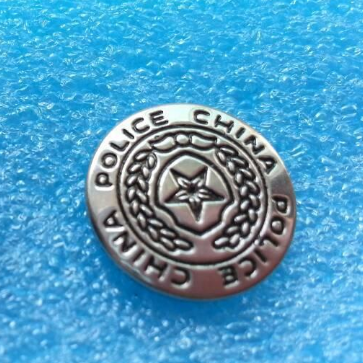Color fastness refers to the resistance of a textile's color to various effects during processing and use, that is, the product's wash-fastness and rubbing resistance. The color fastness is good and bad, and it is directly related to the health and safety of the human body. If the product with poor color fastness encounters rain or sweat during wear, it will cause the pigment on the fabric to fall off and fade. Dye molecules and heavy metal ions may be absorbed by the human body through the skin and endanger human health. On the other hand, it may affect other clothing worn on the body to be stained, or stain other clothes when washing with other clothes. Button detection standards are: 1. Colour fastness to washing ISO 105 C06: 1994/Cor.2:2002(E): Textiles - Tests for colour fastness - Part C06: Colour fastness to household and commercial washing BS EN ISO 105-C06: 1997: Textiles Fastness Test Part C06: Colour fastness to domestic and commercial washings 2. Dry fastness ISO105 D01:1993/BS EN ISO105 D01:1995: Textiles - Tests for colour fastness - Colour fastness to dry cleaning 3, water fastness ISO 105 E01: 1994/Cor.1:2002(E): Textiles fastness test water fastness 4. Colour fastness to seawater ISO 105 E02: 1994/Cor.1:2002(E): Colour fastness to textiles against seawater colour fastness 5. Perspiration fastness color ISO 105 E04: 1994/Cor.1:2002(E) : Test method for perspiration fastness of textiles 6. Colour fastness to dry heat ISO 105 P01: 1993: Tests for colour fastness to textiles Resistance to dry heat (other than hot press) Colour fastness BS EN ISO 105-P01: 1995: Tests for colour fastness to textiles against dry heat (hot pressing Except) Color Fastness 7. Colour fastness to rubbing BS1006 X12:1990: Textiles - Tests for colour fastness - Colour fastness to rubbing EN ISO105 X12:2002: Textiles - Tests for colour fastness - Colour fastness to rubbing 8. Colour fastness to heat and pressure BS EN ISO 105 X11: 1996: Textiles - Tests for colour fastness - Colour fastness to heat and pressure 9. Light color fastness GB/T8427-1998: Textiles resistance to artificial light fastness Want to learn more about buttons: accessible
WHAT IS WATERPROOF?
The meaning of WATERPROOF is impervious to water; especially : covered or treated with a material to prevent permeation by water.
Our wide selection of waterproof fabrics range in bases from polyester or nylon fabric.
Our nylon is a waterproof material suitable for the use as a waterproof garment and backpack application.
Great for jackets, bags or as a outdoor products.
Ripstop by the Roll carries a wide collection of lightweight waterproof fabric. Each fabric type is available in a variety of weaves, coatings, and weights to suit your particular application.
A few of these fabric types include waterproof nylon fabrics, waterproof polyester fabrics. Common uses of our lightweight, waterproof fabrics include Jackets,WIndbreaker,Bagpacks and Tent. You'll find some of the lightest and most waterproof fabrics online at FUHUA.
Waterproof Fabrics,Water Resistant Fabrics,Waterproof Textiles,Waterproof Nylon Fabric Wujiang Fuhua Fabric Co., Ltd , https://www.texfuhua.com